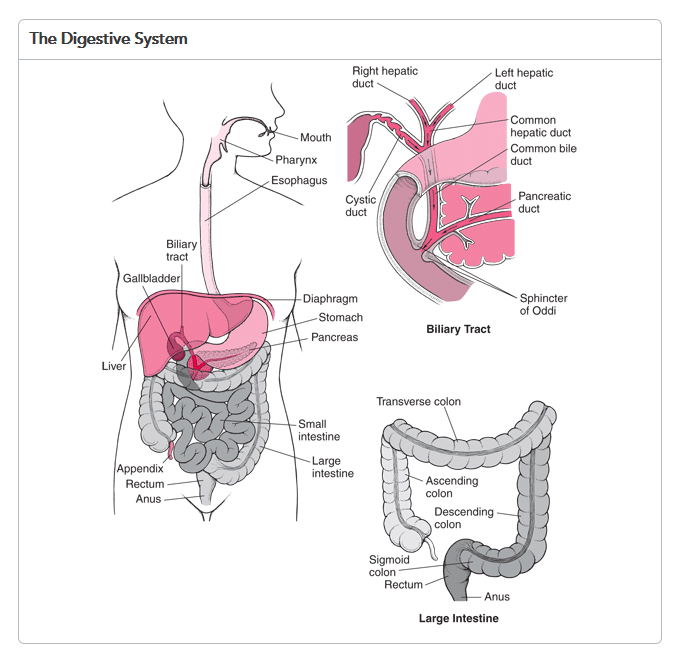- Get link
- X
- Other Apps
- Get link
- X
- Other Apps
 |
The digestive system, which extends from the mouth to the anus, is responsible for receiving food, breaking it down into nutrients (a process called digestion), absorbing the nutrients into the bloodstream, and eliminating the indigestible parts of food from the body. The digestive tract consists of the
The digestive system also includes organs that lie outside the digestive tract:
-
The pancreas
-
The liver
-
The gallbladder
The digestive system is sometimes called the gastrointestinal system, but neither name fully describes the system’s functions or components. The organs of the digestive system also produce blood clotting factors and hormones unrelated to digestion, help remove toxic substances from the blood, and chemically alter (metabolize) drugs.
The abdominal cavity is the space that holds the digestive organs. It is bordered by the abdominal wall (composed of layers of skin, fat, muscle, and connective tissue) in front, the spinal column in back, the diaphragm above, and the pelvic organs below. It is lined, as is the outer surface of the digestive organs, by a membrane called the peritoneum.
Experts have recognized a powerful connection between the digestive system and the brain. For example, psychologic factors greatly influence contractions of the intestine, secretion of digestive enzymes, and other functions of the digestive system. Even susceptibility to infection, which leads to various digestive system disorders, is strongly influenced by the brain. In turn, the digestive system influences the brain. For example, long-standing or recurring diseases such as irritable bowel syndrome, ulcerative colitis, and other painful diseases affect emotions, behaviors, and daily functioning. This two-way association has been called the brain-gut axis.
Aging may also affect how the digestive system functions (see Effects of Aging on the Digestive System).
- Get link
- X
- Other Apps


Comments
Post a Comment